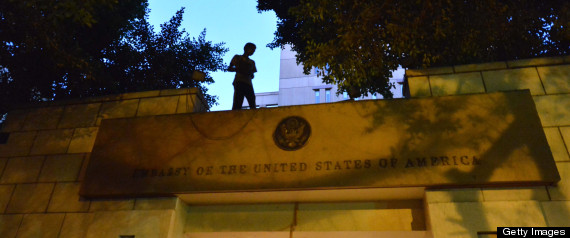Dance, the universe is dancing, a famous saying by 12th century Sufi poet and philosopher Jalaluddin Rumi, resonated in venues around Cairo and Alexandria as the 10th Egyptian International Modern Dance Festival got underway.
Since its inception in 1999, the dance fest has always been keen on connecting local talent with current trends in modern dance by inviting international companies and encouraging collaborations between artists.
This year, the festival hosted dance companies from Spain, Greece, Russia, Turkey, India, France, USA, and a joint project between France and Algeria. These were presented next to 16 Egyptian performances including both amateurs and established dancers.
In its 10th edition, the festival – which concludes tomorrow – added a series of films, entitled “Documentation of Dance; showcasing the work of some of the beacons of modern dance in Europe and the United States such as Martha Graham, Alvin Alley, Maurice Bejart, Caroline Carlson, Ann Teresa di Carsmaker, Pina Bausch and Marie Borline Tani.
The festival also honored distinguished Egyptian figures, namely, Magda Saleh, Louis Greiss, Adam Henein, Ahmad Zaki, Mounir Amer and Mohamed El-Gharabawy.
Two international performances in specific stood out, with tendencies that encapsulate two ends of the continuum of the current developments of modern dance: “Trance and “Past Continuous.
“Trance, by French company Wanted, is categorized as Le New Style.
Directed by Ousmane Sy and Njagui Hagbe, the performance’s eight dancers merged break dance and hip hop’s individual rebellious voice into a collective dance experience portraying physical strategies to deal with oppression, and allowing the body and spirit to endure, survive and overcome.
Divided into two sections, the electrifying movements of the first piece, to the forceful beats of hip hop, create the ambiance of a madhouse, depicting the oscillating mind of those suffering from mental illness with vigorous lunatic energy verging on a spiritual reverie. The second piece is more primordial, delving deeper into the human psyche and its desire to control/be controlled with the heart, tapping into the spirit of jungle energy.
“Trance transcends the suffering, pain and agony through the energetic dynamic of the collective that seem to defy gravity and the limitations of the human body. This performance included the empowering work of a dancer with disability with a gift for amazing physical movements, utilizing his hands and upper body.
While the French break-dance performance offered unique flow and graceful continuity, the Russian piece “Past Continuous represented the opposite.
This performance by Dialogue Dance Company (established by Ivan Estegneev Eugene Kulagin) was created and directed by Albert Albert and Aleksandra Konnikova, based on medieval texts by Thomas Melory.
Discontinuity runs deep in “Past Continuous and is reflected in all the elements of the performance, especially the movement of the five performers and their failed attempts to reach each other or connect physically. None of the eight vignettes followed one idea or feeling until the end.
This continuous discontinuity between different elements of the performance is most obvious in the soundscape of the performance, which jumps between different musical styles, genres and sounds: beeping machines, heartbeats, childlike rhythms, choral chants, music ballads and back to racing heartbeat. The shift between the music pieces was abrupt, as if someone changed their train of thought mid-sentence, and the dance movement mirrors these changes sometimes showing jolted, unconnected moves.
The strongest image of the performance is in the final piece, where the narrator places his chair over the body of one dancer and his table over the body of another, and the four dancers creep on their backs in snake-like movement diagonally across the stage, to the soundtrack of a balladic song.
Then the narrator pulls one of the legs of the red table, using it as a sword, while carrying the table as a shield, evoking Don Quixote, with his makeshift attire and wooden sword. This idealist champion is fighting no windmills but his own demons and the stories that come from inside his head. This final image translates the discontinuity that ran throughout the performance into a vivid physicality of the performer literally dissembling the table, using it both as a weapon and a protection.
The Don Quixote of “Past Continuous makes a more appropriate slogan for the Modern Dance Festival than Rumi’s words. Though the universe is definitely dancing, modern dance faces challenges beyond the desire to follow the universal rhythms: funding, establishing genuine connections to the Egyptian cultural scene, reaching real audiences and finding an authentic voice.
After 10 years of the festival, modern dance in Egypt is hiding behind the flamboyant red table, believing in its cause and fending for it with a wooden sword.





